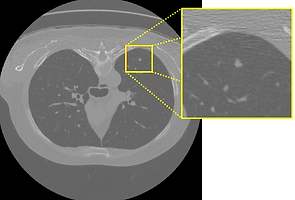

[7] Implementation of "Privacy-Protection Drone Patrol System Based on Face Anonymization" on Nvidia Xavier, 2020.
-
Skill sets: ROS, Python, PyTorch
-
Related results:
1. Privacy-Protection Drone Patrol System Based on Face Anonymization, arXiv, 2020 -
Summary: In the project, I proposed a face-anonymizing drone patrol system. In this system, one person’s face in a video is transformed into a different face with facial components maintained. In order to construct our privacy-preserving system, we proposed a face-anonymizing approach and a training architecture by adopting the latest generative adversarial networks (GANs) frameworks. For the purpose of our system, we made a few modifications to the losses of these frameworks. Our face-anonymizing approach is evaluated with various public face-image and video dataset. Moreover, our system is evaluated with a customized drone consisting of a high-resolution camera, a companion computer, and a drone control computer. Finally, we confirm that our system can protect privacy-sensitive information with our face-anonymizing algorithm while preserving the performance of vision-based robot perception, i.e., simultaneous localization and mapping (SLAM).

[8] Development of Asynchronous Stream-sensing neural Network for Finding Victims in Disaster Area, 2021.
-
Skill sets: Python, PyTorch, MATLAB, MATLAB-Python API
-
Summary : In the 20th century, large-scale natural disasters have been steadily occurring in Haiti, Japan, and the United States. These large-scale natural disasters inevitably result in a huge number of victims. For the survival of the victims, it is essential to develop a system that can efficiently find victims. Drones are a good candidate for the development of an efficient and general victim search system. However, drones powered by batteries have a limited operating time. As such, with the installation of complex protocols comes the difficulty of greater battery consumption. Therefore, in this paper, to achieve a light and efficient victim search drone, we propose a system that detects the number of asynchronously transmitted signals from victims’ mobile devices. For this system, we propose a machine learning-based asynchronous stream-sensing network (‘ASensNet’), which is developed by combining several neural networks. In addition, to train our proposed network, we propose a framework that connects our MATLAB-based simulator and PyTorch-based network training code. Finally, extensive evaluation has proven that by outperforming existing mathematical methods our proposal performs well enough for use in a disaster situation.
[6] Implementation of "Privacy-Preserving Robot Vision with Anonymized Faces by Extreme Low Resolution" on Nvidia Xavier, a companion computer, 2019.
-
Skill sets: ROS, Python, TensorFlow
-
Related results:
1. Privacy-Preserving Robot Vision with Anonymized Faces by Extreme Low Resolution, IROS, 2019 -
Summary: In the project, "Privacy-Preserving Robot Vision with Anonymized Faces by Extreme Low Resolution", I took the role of making a patrol robot with the privacy-preserving robot vision scheme using the deep neural network proposed by my co-worker. I used Turtlebot 3 as the patrol robot and added an Nvidia Xavier and a ZED camera to it. In addition, I implemented ORB SLAM2 which is one of the visual odometry schemes on the Xavier. I utilized ROS (Robot Operating System) to take images from the ZED camera, to put the images in the proposed neural network, to send the results from the network to the ORB SLAM2 module, and finally to transmit ORB-SLAM2 results to our ground station.

[5] Event-Driven MATLAB simulator for the coexistence of LAA-LTE and Asymmetric Hidden APs, 2018.
-
Supplementary materials: [PPT Link]
-
Skill sets: LAA-LTE MAC/PHY, Wi-Fi MAC/PHY, MATLAB
-
Related results:
1. "Downlink Interference Control of LAA-LTE for Coexistence with Asymmetric Hidden Wi-Fi APs," accepted for publication in IEEE Transactions on Vehicular Technology (TVT).
2. "Downlink MU-MIMO LTE-LAA for Coexistence with Asymmetric Hidden Wi-Fi APs," accepted for publication in IEEE Transactions on Mobile Computing (TMC). -
Summary: this simulator implements the key MAC and PHY functionalities, and the new channel model between LAA-LTE and Wi-Fi, where MAC and PHY parameters are set based on the specifications of LAA-LTE and Wi-Fi.
[4] USRP-MATLAB platform for Development of an LAA-LTE Transmitter with the lightweight Wi-Fi preamble detection, 2018.
-
Supplementary material: [PPT Link] [Video Link]
-
Skill sets: USRP, Wi-Fi PHY, MATLAB
-
Related results:
1. "Poster: Development of an LAA-LTE Transmitter with Lightweight Wi-Fi Frame Detection," Mobicom, 2018
2. "Lightweight Wi-Fi Frame Detection for Licensed Assisted Access LTE," IEEE Access 2019 -
Summary: in this platform, we utilized two USRP N210s, implementing a Wi-Fi transmitter and an LAA-LTE transmitter with the proposed Wi-Fi frame detection. For comparison, another N210 was used to implement a conventional Wi-Fi transmitter with conventional Wi-Fi frame detection and energy detection. Each USRP was equipped with an XCVR2450 daughterboard and used the same 20 MHz channel in 5 GHz unlicensed bands.


[3] MATLAB simulator for the asymmetric hidden terminal problem between LAA-LTE and Wi-Fi, 2017.
-
Supplementary material: [PPT Link]
-
Skill sets: LAA-LTE MAC, Wi-Fi MAC, MATLAB
-
Related results:
1. "Performance Analysis of License Assisted Access LTE with Asymmetric Hidden Terminals," published in IEEE Transactions on Mobile Computing (TMC), 2018
[2] The Deep Neural Network for the lung nodule detection, 2016.
-
Skill sets: TensorFlow, Python
-
Summary: this project utilized the deep neural network for lung nodule detection. In this project, the proposed network is constructed by utilizing the 3D-CNN which is one of the most popular networks in the field of deep neural networks.
[1] NS-3 Simulator for a Channel Switching Scheme for Layered Video using Relay Transmission, 2014.
-
Skill sets: NS-3 simulator, Wi-Fi MAC, video encoding
-
Related results:
1. "A Channel Switching Scheme for Layered Video Using Relay Transmissions," M.S Thesis, 2014

